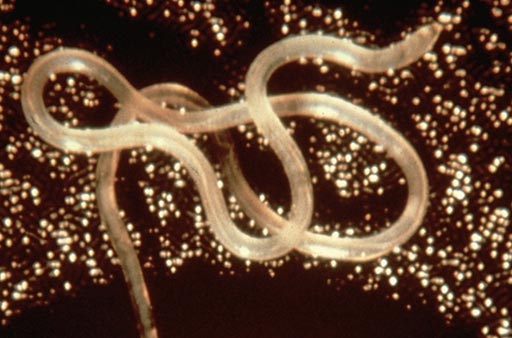Cellphone-Based Microscope Helps Treat River Blindness
By MedImaging International staff writers
Posted on 21 Nov 2017
A smartphone-connected microscope uses video technology to automatically detect and quantify infection by parasitic worms in a drop of blood, according to a new study.Posted on 21 Nov 2017
Developed at the University of California (UC, Berkeley, USA), LoaScope technology is a field-friendly diagnostic tool that turns the camera of a mobile phone or tablet computer into a high-quality light microscope. The technology has applications that incude infectious disease diagnosis, ocean microorganism surveys, eye disease detection diagnosis, and classroom education. For the study, the LoaScope was used to identify persons with Loa loa microfilariae in their peripheral blood with a density greater than 20,000 microfilariae per milliliter of blood.

Image: An adult Loa loa worm (Photo courtesy of UC Berkeley).
The quantification was necessary to identify persons if patients suffering from river blindness are also infected with Loa loa before receiving treatment. River blindness is caused by another parasitic worm, Onchocerca volvulus, which is transmitted to humans through bites of infected black flies; left untreated, infections in the eye can lead to blindness. The medication to treat the infection, ivermectin, can be fatal when the patient also has high blood levels of Loa loa. From August through October 2015, 16,259 persons five years of age or older were tested for Loa loa.
The results showed that among study participants who underwent testing, 95.5% received ivermectin, 2.1% were excluded from ivermectin distribution because of an L. loa microfilarial density above the risk threshold, and 2.4% were excluded because of pregnancy or illness. No serious adverse events were observed, and non-serious adverse events were recorded in 934 participants, most of whom (67.5%) had no detectable L. loa microfilariae. The study was published on November 8, 2017, in the New England Journal of Medicine (NEJM).
“This is not just a step forward for efforts to eliminate river blindness, but it is a demonstration that mobile microscopy, based on a mobile phone, can safely and effectively expand access to healthcare,” said study co-author bioengineering professor Daniel Fletcher, PhD. “This work sets the stage for expanding the use of mobile microscopy to improve diagnosis and treatment of other diseases, both in low-resource areas and eventually back in the United States.”
Ivermectin is effective against many different types of parasites, such as head lice, scabies, river blindness, strongyloidiasis, and lymphatic filariasis, among others. It has an added bonus of helping keep malaria-carrying mosquito populations at bay. Discovered in 1975, Ivermectin works by causing an increase in the permeability of the cell membrane, resulting in paralysis and death of the parasite.
Related Links:
University of California













